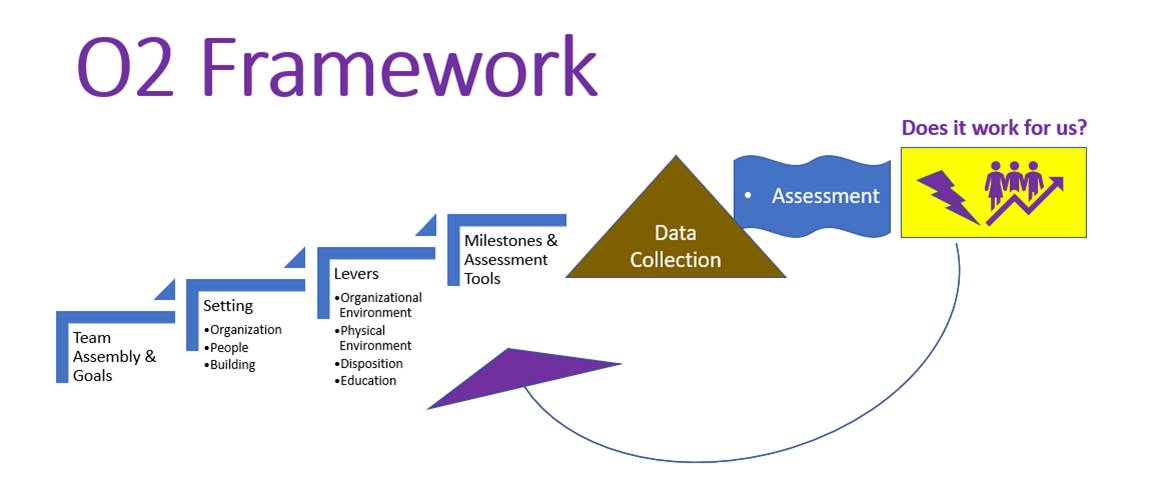|
One of the things I learned as a military planner is that it is better to get an idea out to informed people early so they can pick it apart (aka, constructive criticism). So here goes... This is a draft model created as a framework for most organizations to achieve symbiosis between energy goals and occupant performance.
1. Team Assembly and Goals: Two key areas must be clear going into this project: 1) How (and by whom) are energy and human performance goals set? 2) how is the monitoring of these goals resourced (by manpower, technology and time)? 2. Setting: Understanding the organizational, human and physical (building) environment, and their requirements and limitations. What are your organizational priorities? What types of energy use, special equipment and human comfort are required to meet these priorities? What is the capability and capacity of your building/facility? How is effectiveness defined and are there ways to leverage efficiencies? You can have effective and efficient results in your facilities, however you may have to understand the setting in order to make hard decisions about human and physical environmental priorities and ensure you meet your organizational goals. The laws of thermodynamics are demanding...and they are LAWS! Proceed with caution if you think you have a magic pill. 3. Levers: The four O2 categories (knowledge, disposition, organizational environment, and physical environment) bin 20 different approaches outlined in academic literature addressing the nexus of occupant behavior and energy performance. Step 2 Setting provides an opportunity for organizations to clearly understand which Levers will work best for them. There must be a crosswalk between these requirements and milestones which comprise intermediate goals. 4. Milestones and Assessment Tools: Once the levers are selected, the next step is the development of milestones supporting your goals. These milestones must be assessed by an internal or external party to understand the progress. If there are shortfalls, decision makers must determine: 1) does the assessment require more time?, 2) should the approach or lever change?, or 3) Is the goal/milestone attainable? 5. Data Collection/Assessment: Resources must be allocated to collect (this is where technology comes in) performance parameters aligned with milestones and goals. This will, in most cases require a human being to sort the wheat from the chaff and understand if goals are truly being met. Energy goals can be cut and dry. However if you layer this on organizational goals energy may not be the best metric to assess success. 6. Does it work for us?: This is the most important evaluation. Can you meet your organizational goals within the parameters of energy efficiency. If not, it is time to go back to make sure you have a strong foundation. If you have a strong team and understanding of the setting, this means Step 3 Levers and Step 4 Milestones and Assessment Tools. However, if you breezed over steps 1 & 2 you may need to reevaluate your basic team structure and understanding of the direction your organization is heading in concert with its physical environmental factors. Remember: If you don't know where you are going, any road will take you there. Please make comments about this model -- feedback from the field is critical to make this a useful tool.
5 Comments
|
CristineWorking to save the planet..one idea at a time. Archives
April 2020
Categories |

 RSS Feed
RSS Feed
